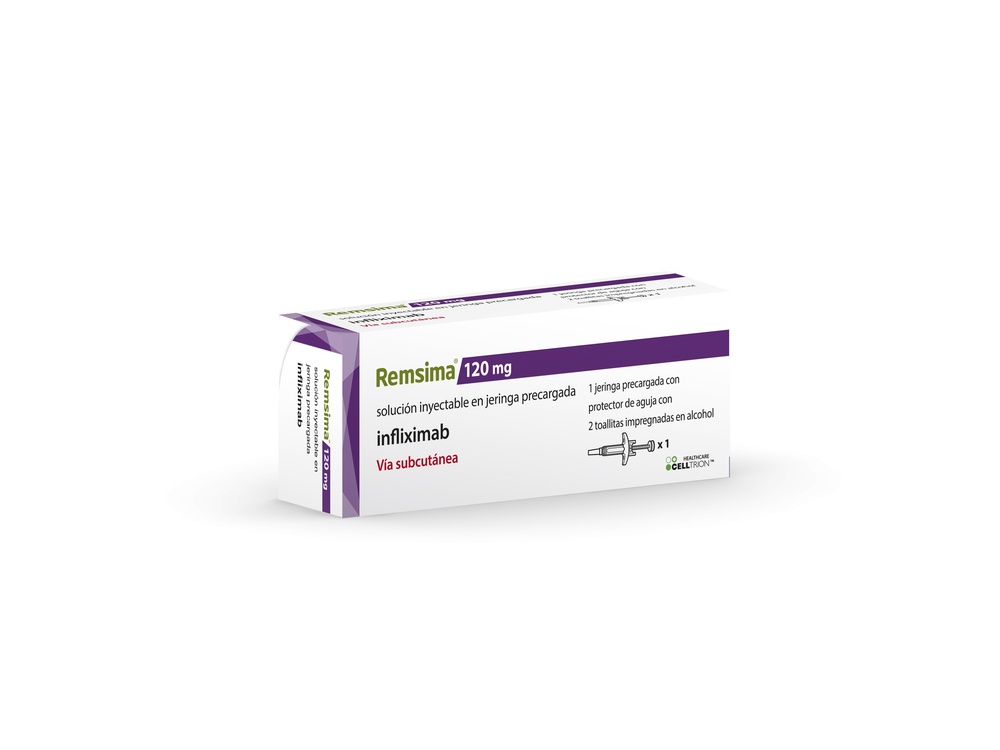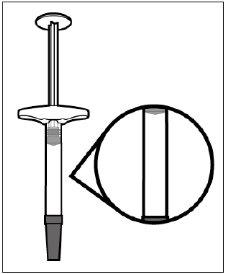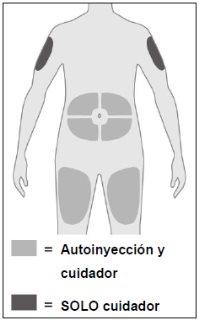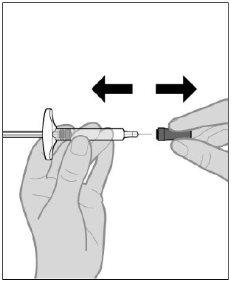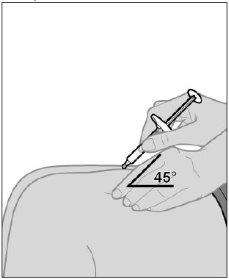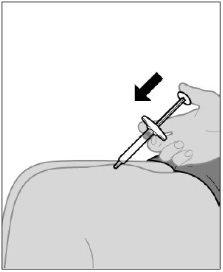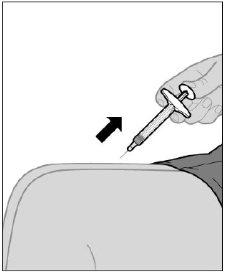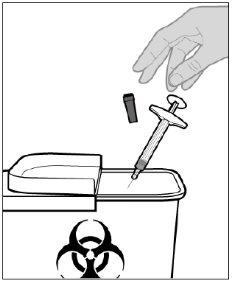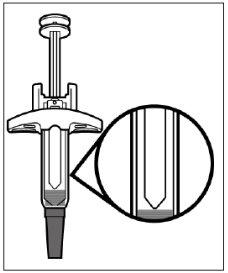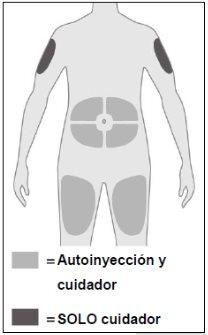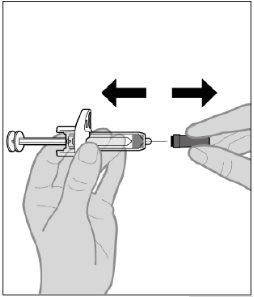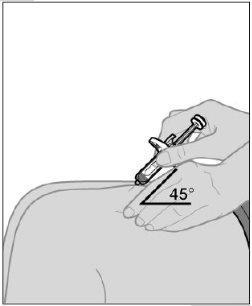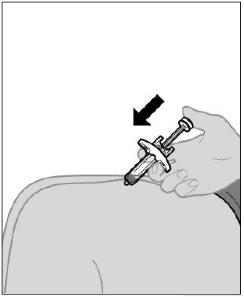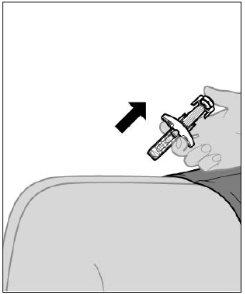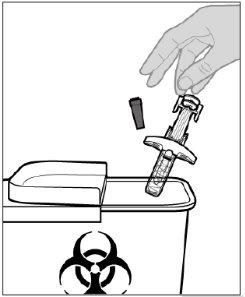
How to use REMSIMA 120 mg SOLUTION FOR INJECTION IN PRE-FILLED SYRINGE
Introduction
Package Leaflet: Information for the User
Remsima 120 mg solution for injection in pre-filled syringe
infliximab
Read all of this leaflet carefully before you start using this medicine because it contains important information for you.
- Keep this leaflet, you may need to read it again.
- Your doctor will also give you a patient information card, which contains important safety information that you need to know before and during your treatment with Remsima.
- When you start a new card, keep this card as a reference for 4 months after your last dose of Remsima.
- If you have any further questions, ask your doctor, pharmacist, or nurse.
- This medicine has been prescribed for you only, and you should not pass it on to others. It may harm them, even if their signs of illness are the same as yours.
- If you experience any side effects, talk to your doctor, pharmacist, or nurse. This includes any possible side effects not listed in this leaflet. See section 4.
Contents of the pack
- What is Remsima and what is it used for
- What you need to know before you start using Remsima
- How to use Remsima
- Possible side effects
- Storing Remsima
- Contents of the pack and other information
- Instructions for use
1. What is Remsima and what is it used for
Remsima contains the active substance infliximab. Infliximab is a monoclonal antibody – a type of protein that binds to a specific target in the body called TNF (tumor necrosis factor) alpha.
Remsima belongs to a group of medicines called “TNF blockers”. It is used in adults for the following inflammatory diseases:
- Rheumatoid arthritis
- Psoriatic arthritis
- Ankylosing spondylitis (Bechterew's disease)
- Psoriasis
- Crohn's disease
- Ulcerative colitis.
Remsima works by selectively binding to TNF alpha and blocking its action. TNF alpha is involved in the body's inflammatory processes, so blocking it can reduce inflammation in your body.
Rheumatoid Arthritis
Rheumatoid arthritis is an inflammatory disease of the joints. If you have active rheumatoid arthritis, you will first be given other medicines. If these medicines do not work well enough, you will be given Remsima with another medicine called methotrexate to:
- reduce the signs and symptoms of your disease,
- slow down the damage to your joints,
- improve your physical function.
Psoriatic Arthritis
Psoriatic arthritis is an inflammatory disease of the joints, usually accompanied by psoriasis. If you have active psoriatic arthritis, you will first be given other medicines. If these medicines do not work well enough, you will be given Remsima to:
- reduce the signs and symptoms of your disease,
- reduce the damage to your joints,
- improve your physical function.
Ankylosing Spondylitis (Bechterew's disease)
Ankylosing spondylitis is an inflammatory disease of the spine. If you have ankylosing spondylitis, you will first be given other medicines. If these medicines do not work well enough, you will be given Remsima to:
- reduce the signs and symptoms of your disease,
- improve your physical function.
Psoriasis
Psoriasis is an inflammatory disease of the skin. If you have moderate to severe plaque psoriasis, you will first be given other medicines or treatments such as phototherapy. If these medicines or treatments do not work well enough, you will be given Remsima to reduce the signs and symptoms of your disease.
Ulcerative Colitis
Ulcerative colitis is an inflammatory disease of the intestine. If you have ulcerative colitis, you will first be given other medicines. If these medicines do not work well enough, you will be given Remsima to treat your disease.
Crohn's Disease
Crohn's disease is an inflammatory disease of the intestine. If you have Crohn's disease, you will first be given other medicines. If these medicines do not work well enough, you will be given Remsima to:
- treat your active Crohn's disease,
- reduce the number of abnormal connections (fistulas) between your intestine and your skin, that have not been controlled by other medicines or surgery.
2. What you need to know before you start using Remsima
Do not use Remsima if
- you are allergic to infliximab or any of the other ingredients of Remsima (listed in section 6),
- you are allergic to proteins that come from mice,
- you have tuberculosis (TB) or another serious infection such as pneumonia or sepsis (serious bacterial infection of the blood),
- you have a moderate or severe heart failure.
If any of the above applies to you, do not use Remsima. If you are not sure, talk to your doctor before you are given Remsima.
Warnings and precautions
Talk to your doctor before or during treatment with Remsima if:
You have received treatment with any medicine that contains infliximab before
- Tell your doctor if you have received treatment with medicines that contain infliximab in the past and now start a new treatment with Remsima.
- If you have stopped treatment with infliximab for more than 16 weeks, there is a greater risk of allergic reactions when you start treatment again.
Local reactions at the injection site
- Some patients who receive infliximab by injection under the skin have experienced local reactions at the injection site. The signs of a local reaction at the injection site may include redness, pain, itching, swelling, hardening, bruising, bleeding, feeling of cold, feeling of tingling, irritation, rash, ulcer, nodules, blisters, and scabs on the skin at the injection site.
- Most of these reactions are mild to moderate and most resolve on their own within a day.
Infections
- Before you are given Remsima, tell your doctor if you have an infection, even if it is minor.
- Before you are given Remsima, tell your doctor if you have ever lived or traveled in an area where certain infections (such as histoplasmosis, coccidioidomycosis, or blastomycosis) are common. These infections are caused by certain types of fungi that can affect the lungs or other parts of your body.
- You may be more likely to get infections when you are being treated with Remsima. If you are 65 years of age or older, you are at greater risk.
- These infections can be serious and include tuberculosis, infections caused by viruses, fungi, bacteria, or other organisms in the environment, and sepsis, which can be life-threatening.
Tell your doctor right away if you notice signs of infection during treatment with Remsima, such as fever, cough, flu-like symptoms, general feeling of being unwell, redness or feeling of warmth on the skin, wounds, or dental problems. Your doctor may recommend temporarily stopping treatment with Remsima.
Tuberculosis (TB)
- It is very important that you tell your doctor if you have ever had TB or if you have been in close contact with someone who has had or has TB.
- Your doctor will do a test to see if you have TB. Cases of TB have been reported in patients treated with infliximab, even in patients who have been treated with medicines for TB. Your doctor will record these tests on your patient information card.
- If your doctor thinks you are at risk of getting TB, you may be treated with medicines for TB before you are given Remsima.
Tell your doctor right away if you notice signs of TB during treatment with Remsima. The signs include persistent cough, weight loss, feeling of tiredness, fever, night sweats.
Hepatitis B virus
- Before you use Remsima, tell your doctor if you are a carrier of hepatitis B or if you have had it before.
- Tell your doctor if you think you may be at risk of getting hepatitis B.
- Your doctor should do tests for the hepatitis B virus.
- Treatment with TNF blockers, such as Remsima, can cause the hepatitis B virus to become active again in patients who carry this virus, which in some cases can be life-threatening.
- If you experience a reactivation of hepatitis B, your doctor may need to stop your treatment and give you antiviral therapy with supportive treatment.
Heart problems
- Tell your doctor if you have any heart problems, such as mild heart failure.
- Your doctor will want to keep a close eye on your heart.
Tell your doctor right away if you notice new or worsening signs of heart failure during treatment with Remsima. The signs include difficulty breathing or swelling of the feet.
Cancer and lymphoma
- Before you are given Remsima, tell your doctor if you have or have ever had lymphoma (a type of blood cancer) or any other cancer.
- Patients with severe rheumatoid arthritis who have had the disease for a long time may have a higher risk of developing lymphoma.
- Patients treated with Remsima may have a higher risk of developing lymphoma or other types of cancer.
- Some patients who have received TNF blockers, including infliximab, have developed a rare type of cancer called hepatosplenic T-cell lymphoma. Most of these patients were adolescent or young adult males and most had Crohn's disease or ulcerative colitis. This type of cancer is usually fatal. Almost all of these patients had also received medicines containing azathioprine or 6-mercaptopurine, in addition to TNF blockers.
- Some patients treated with infliximab have developed certain types of skin cancer. Tell your doctor if you notice any changes in your skin or growths on your skin during or after treatment.
- Some women treated with infliximab for rheumatoid arthritis have developed cervical cancer. Women treated with Remsima, even those over 60 years of age, may need regular cervical cancer screening.
Lung disease or heavy smoking
- Before you are given Remsima, tell your doctor if you have a lung disease called chronic obstructive pulmonary disease (COPD) or if you are a heavy smoker.
- Patients with COPD and patients who are heavy smokers may have a higher risk of developing cancer with treatment with Remsima.
Nervous system disease
- Tell your doctor if you have or have ever had a problem that affects your nervous system before you are given Remsima. This includes multiple sclerosis, Guillain-Barré syndrome, if you have had seizures or have been diagnosed with “optic neuritis”.
Tell your doctor right away if you notice symptoms of nervous system disease during treatment with Remsima. The symptoms can be changes in vision, weakness in the arms or legs, numbness or tingling in any part of the body.
Abnormal skin openings
- Talk to your doctor if you have any abnormal skin openings (fistulas) before you are given Remsima.
Vaccines
- Talk to your doctor if you have recently had or are scheduled to have a vaccine.
- Before you start treatment with Remsima, you should receive all recommended vaccines. You can receive some vaccines during treatment with Remsima, but you should not receive live vaccines (vaccines that contain a live, weakened infectious agent) while you are using Remsima, because they may cause infections.
- If you received Remsima while you were pregnant, your baby may also have a higher risk of getting an infection. It is important that you tell your baby's doctors and other healthcare professionals about your treatment with Remsima, so they can decide when your baby can be vaccinated, including live vaccines, such as BCG (used to prevent tuberculosis).
- If you are breastfeeding, it is important that you tell your baby's doctors and other healthcare professionals about your treatment with Remsima before your baby is vaccinated.
For more information, see the section on Pregnancy and breastfeeding.
Therapeutic infectious agents
- Tell your doctor if you have recently received or are scheduled to receive treatment with an infectious agent (such as a BCG instillation used for cancer treatment).
Surgery or dental procedures
- Tell your doctor if you are going to have any surgery or dental procedure.
- Tell your surgeon or dentist that you are being treated with Remsima and show them your patient information card.
Liver problems
- Some patients who received Remsima have developed serious liver problems.
- Tell your doctor right away if you notice symptoms of liver problems during treatment with Remsima. The symptoms can be yellowing of the skin and eyes, dark brown urine, pain or swelling in the upper right side of the stomach, pain in the joints, skin rash, or fever.
Low blood cell counts
- In some patients who receive Remsima, the body cannot produce enough blood cells that help fight infections or help stop bleeding.
- Tell your doctor right away if you notice symptoms of low blood cell counts during treatment with Remsima. The symptoms can be persistent fever, bleeding or bruising easily, small red or purple spots caused by bleeding under the skin, or paleness.
Immune system disorder
- Some patients who received Remsima have developed symptoms of an immune system disorder called lupus.
- Tell your doctor right away if you develop symptoms of lupus during treatment with Remsima. The symptoms can be joint pain or a rash on the cheeks or arms caused by sun sensitivity.
Children and adolescents
Do not give this medicine to children and adolescents under 18 years of age, as there is no data to demonstrate that this medicine is safe and effective in this age group.
Other medicines and Remsima
Patients with inflammatory diseases are already taking medicines to treat their condition. These medicines may cause side effects. Your doctor will advise you which other medicines you should continue to use while you are being treated with Remsima.
Tell your doctor if you are using, have recently used, or might use any other medicine, including any other medicine for the treatment of Crohn's disease, ulcerative colitis, rheumatoid arthritis, ankylosing spondylitis, psoriatic arthritis, or psoriasis, or medicines that you buy without a prescription, such as vitamins or herbal remedies.
In particular, tell your doctor if you are using any of the following medicines:
- Medicines that affect your immune system.
- Kineret (which contains anakinra). Remsima and Kineret should not be used at the same time.
- Orencia (which contains abatacept). Remsima and Orencia should not be used at the same time.
You should not receive live vaccines while you are using Remsima. If you were using Remsima during pregnancy or if you are receiving Remsima during breastfeeding, tell your baby's doctor and other healthcare professionals about your treatment with Remsima before your baby receives any vaccine.
If you are not sure if any of the above applies to you, talk to your doctor, pharmacist, or nurse before you start using Remsima.
Pregnancy, breastfeeding, and fertility
- If you are pregnant or breastfeeding, think you may be pregnant, or are planning to have a baby, ask your doctor for advice before taking this medicine. Remsima should only be used during pregnancy or breastfeeding if your doctor thinks it is necessary for you.
- You should avoid becoming pregnant while you are being treated with Remsima and for 6 months after treatment has finished. Discuss the use of contraceptive measures during this time with your doctor. If you received Remsima during your pregnancy, your baby may have a higher risk of getting an infection.
- It is important that you tell your baby's doctors and other healthcare professionals about your treatment with Remsima before your baby is vaccinated. If you received Remsima while you were pregnant, giving the BCG vaccine (used to prevent tuberculosis) to your baby within 6 months after birth may cause serious infections, including death. Live vaccines, such as BCG, should not be given to your baby within 6 months after birth. For more information, see the section on vaccines.
- If you are breastfeeding, it is important that you tell your baby's doctors and other healthcare professionals about your treatment with Remsima before your baby is vaccinated.
- In children born to women treated with infliximab during pregnancy, a serious decrease in the number of white blood cells in the blood has been reported. If your baby has fevers or infections, contact your baby's doctor right away.
Driving and using machines
Remsima is unlikely to affect your ability to drive or use tools or machines. If you feel tired, dizzy, or unwell after you are given Remsima, do not drive or use tools or machines.
Remsima contains sodium and sorbitol
This medicine contains less than 1 mmol of sodium (23 mg) per dose, which is essentially “sodium-free” and 45 mg of sorbitol in each 120 mg dose.
3. How Remsima will be administered to you
Follow exactly the administration instructions of this medicine indicated by your doctor.
In case of doubt, consult your doctor again.
Rheumatoid Arthritis
Your doctor will start your treatment with or without two intravenous infusions of Remsima at 3 mg per kg of body weight (administered in a vein, usually in the arm, over a period of 2 hours). If the intravenous infusions of Remsima are administered to initiate treatment, they are administered with a 2-week difference by intravenous infusion. After 4 weeks from the last intravenous infusion, you will be administered Remsima via subcutaneous injection (subcutaneous injection).
The usual recommended dose of Remsima subcutaneous injection is 120 mg once every 2 weeks, regardless of body weight.
Psoriatic Arthritis, Ankylosing Spondylitis (Bechterew's disease), and Psoriasis
Your doctor will start your treatment with two intravenous infusions of Remsima at 5 mg per kg of body weight (administered in a vein, usually in the arm, over a period of 2 hours). They are administered with a 2-week difference by intravenous infusion. After 4 weeks from the last intravenous infusion, you will be administered Remsima via subcutaneous injection (subcutaneous injection).
The usual recommended dose of Remsima subcutaneous injection is 120 mg once every 2 weeks, regardless of body weight.
Crohn's Disease and Ulcerative Colitis
Your doctor will start your treatment with two intravenous infusions of Remsima at 5 mg per kg of body weight (administered in a vein, usually in the arm, over a period of 2 hours). They are administered with a 2-week difference by intravenous infusion. After 4 weeks from the last intravenous infusion, you will be administered Remsima via subcutaneous injection (subcutaneous injection).
The usual recommended dose of Remsima subcutaneous injection is 120 mg once every 2 weeks, regardless of body weight.
How Remsima will be administered to you
- Remsima 120 mg solution for injection is administered via subcutaneous injection (subcutaneous route) only. It is essential to consult the product labels to ensure that the correct formulation is being administered according to the prescription.
- For patients with rheumatoid arthritis, your doctor may initiate treatment with Remsima with or without two intravenous infusions of Remsima. For patients with Crohn's disease, ulcerative colitis, ankylosing spondylitis, psoriatic arthritis, or psoriasis, two intravenous infusions of Remsima will be administered to initiate treatment with Remsima.
- If treatment with Remsima is initiated without two intravenous infusions of Remsima, the following table indicates the frequency at which this medicine will normally be administered to you after the first dose.
2nd dose | 1 week after the 1st dose |
3rd dose | 2 weeks after the 1st dose |
4th dose | 3 weeks after the 1st dose |
5th dose | 4 weeks after the 1st dose |
Other doses | 6 weeks after the 1st dose and then every 2 weeks |
- If your doctor or nurse administers two intravenous infusions of Remsima to initiate treatment, they will be administered with a 2-week difference, and the first subcutaneous injection of Remsima will be administered 4 weeks after the last intravenous infusion, followed by subcutaneous injections of Remsima administered every 2 weeks.
- The first subcutaneous injection of Remsima will be administered under the supervision of your doctor.
- After adequate training, if you feel well-trained and confident to inject Remsima yourself, your doctor may allow you to self-inject subsequent doses of Remsima at home.
- Talk to your doctor if you have any questions about how to administer an injection yourself. You will find detailed "Instructions for use" at the end of the leaflet.
If you use more Remsima than you should
If you have used more Remsima than you should (either by injecting too much at one time or using it too frequently), talk to a doctor, pharmacist, or nurse immediately. Always keep the medicine packaging with you, even if it is empty.
If you forget to use Remsima
Missed dose up to 7 days
If you miss a dose of Remsima up to 7 days after the originally scheduled dose, you should take the missed dose as soon as possible. Take the next dose on the originally planned date and then follow the original dosing schedule.
Missed dose for 8 or more days
If you miss a dose of Remsima for 8 or more days after the originally scheduled dose, you should not take the missed dose. Take the next dose on the originally planned date and then follow the original dosing schedule.
If you are unsure when to inject Remsima, call your doctor.
If you have any other questions about the use of this medicine, consult your doctor, pharmacist, or nurse.
4. Possible side effects
Like all medicines, this medicine can cause side effects, although not everybody gets them. Most side effects are mild to moderate. However, some patients may experience serious side effects and may require treatment. Side effects can also occur after your treatment with Remsima has finished.
Tell your doctor immediately if you notice any of the following:
- Signs of an allergic reactionsuch as swelling of the face, lips, mouth, or throat, which may cause difficulty swallowing or breathing, skin rash, hives, swelling of the hands, feet, or ankles. Some of these reactions can be serious or potentially life-threatening. An allergic reaction can occur within 2 hours of your injection or later. Other allergic side effects can occur up to 12 days after your injection, such as muscle pain, fever, joint pain, or jaw pain, sore throat, or headache.
- Signs of a local reaction at the injection sitesuch as redness, pain, itching, swelling, hardening, bruising, bleeding, feeling of cold, tingling sensation, irritation, rash, ulcer, nodules, blisters, and crusts.
- Signs of a heart problemsuch as chest pain or discomfort, arm pain, stomach pain, difficulty breathing, anxiety, dizziness, fainting, sweating, nausea (feeling sick), vomiting, palpitations or pounding in the chest, fast or slow heartbeat, and swelling of the feet.
- Signs of infection (including TB)such as fever, tiredness, persistent cough, difficulty breathing, flu-like symptoms, weight loss, night sweats, diarrhea, wounds, accumulation of pus in the abdomen or around the anus (abscess), dental problems, or painful urination.
- Possible signs of cancerincluding, but not limited to, swelling of the lymph nodes, weight loss, fever, unusual skin nodules, changes in moles or skin color, or vaginal bleeding.
- Signs of a lung problemsuch as cough, difficulty breathing, or chest tightness.
- Signs of a nervous system problem (including eye problems)such as signs of a stroke (sudden numbness or weakness of your face, arm, or leg, especially on one side of your body; sudden confusion, difficulty speaking or understanding; difficulty seeing with one or both eyes, difficulty walking, dizziness, loss of balance or coordination, or a severe headache), seizures, numbness/tingling in any part of the body, or weakness in arms or legs, vision changes such as double vision or other eye problems.
- Signs of a liver problem(including hepatitis B infection when you have had hepatitis B before) such as yellowing of the skin and eyes, dark-colored urine, pain or swelling in the upper right side of the stomach, joint pain, skin rash, or fever.
- Signs of an immune system disordersuch as joint pain or a sun-sensitive rash on the cheeks or arms (lupus) or cough, difficulty breathing, fever, or skin rash (sarcoidosis).
- Signs of low blood cell countssuch as persistent fever, bleeding, or bruising easily, small red or purple spots caused by bleeding under the skin, or paleness.
- Signs of serious skin problemssuch as red or purple spots on the skin, often with central blisters, on the trunk, large areas of peeling skin, or ulcers in the mouth, throat, nose, genitals, and eyes, or small pus-filled bumps that can spread across the body. These skin reactions can be accompanied by fever.
Tell your doctor immediately if you notice any of the above.
The following side effects have been observed with Remsima:
Very common:may affect more than 1 in 10 people
- Stomach pain, nausea
- Viral infections such as herpes or flu
- Upper respiratory tract infections such as sinusitis
- Headache
- Injection site reaction
- Pain
Common:may affect up to 1 in 10 people
- Changes in liver function, increased liver enzymes (shown in blood tests)
- Lung or chest infections, such as bronchitis or pneumonia
- Difficulty breathing or painful breathing, chest pain
- Stomach or intestinal bleeding, diarrhea, indigestion, heartburn, constipation
- Hives (nettle rash), itchy skin rash, dry skin
- Balance or dizziness problems
- Fever, increased sweating
- Circulation problems such as low or high blood pressure
- Bruising, flushing, or nosebleeds
- Feeling tired or weak
- Bacterial infections such as septicemia, abscess, or skin infection (cellulitis)
- Fungal skin infection
- Blood problems such as anemia or low white blood cell count
- Swollen lymph nodes
- Depression, sleep problems
- Eye problems, including red eyes and infections
- Fast heartbeat or palpitations
- Joint, muscle, or back pain
- Urinary tract infection
- Psoriasis, skin problems such as eczema, and hair loss
- Injection site reactions such as pain, swelling, redness, or itching
- Chills, fluid accumulation under the skin causing swelling
- Numbness or tingling sensation
Uncommon:may affect up to 1 in 100 people
- Lack of blood flow, vein swelling
- Blood accumulation outside the blood vessels (hematoma) or bruising
- Skin problems such as blisters, warts, abnormal skin color or pigmentation, or swollen lips, or thickened skin, or redness, scaly and peeling skin
- Severe allergic reactions (e.g., anaphylaxis), immune system disorder called lupus, allergic reactions to foreign proteins
- Slow-healing wounds
- Liver inflammation (hepatitis) or bile duct inflammation, liver damage
- Feeling forgetful, irritable, confused, nervous
- Eye problems, including blurred or reduced vision, or swollen eyes with styes
- Heart problems or worsening of existing heart problems, decreased heart rate
- Fainting
- Seizures, nerve problems
- Intestinal ulcers or obstruction, stomach pain or cramps
- Pancreas inflammation (pancreatitis)
- Fungal infections such as Candida or fungal nail infections
- Lung problems (such as edema)
- Fluid around the lungs (pleural effusion)
- Narrowing of the airways in the lungs, causing difficulty breathing
- Inflammation of the membrane that protects the lung, causing sharp chest pain that worsens with breathing (pleurisy)
- Tuberculosis
- Kidney infections
- Low platelet count, too many white blood cells in the blood, bruising, or black and blue marks
- Vaginal infections
- Blood test results showing "antibodies" against your own body
- Changes in cholesterol and fat levels in the blood
Rare:may affect up to 1 in 1,000 people
- A type of blood cancer (lymphoma)
- Your blood not providing enough oxygen to your body, circulation problems such as narrowing of a blood vessel
- Inflammation of the membranes that protect the brain (meningitis)
- Infections due to a weakened immune system
- Hepatitis B infection when you have had hepatitis B before
- Liver inflammation caused by an immune system problem (autoimmune hepatitis)
- Liver problem that causes yellowing of the skin and eyes (jaundice)
- Swelling or abnormal growth of tissues
- Severe allergic reaction that can cause loss of consciousness and can be life-threatening (anaphylactic shock)
- Inflammation of small blood vessels (vasculitis)
- Immune system disorders that can affect the lungs, skin, and lymph nodes (such as sarcoidosis)
- Accumulation of immune cells as a result of an inflammatory response (granulomatous lesions)
- Lack of interest or emotion
- Serious skin problems such as toxic epidermal necrolysis, Stevens-Johnson syndrome, and acute generalized exanthematous pustulosis
- Other skin problems such as erythema multiforme, blisters, and skin peeling, or boils (furunculosis)
- Severe nervous system problems such as transverse myelitis, multiple sclerosis-like disease, optic neuritis, and Guillain-Barré syndrome
- Inflammation in the eye that can cause vision changes, including blindness
- Fluid in the membrane that protects the heart (pericardial effusion)
- Serious lung problems (such as interstitial lung disease)
- Melanoma (a type of skin cancer)
- Cervical cancer
- Low blood cell counts, including a severe decrease in the number of white blood cells in the blood
- Small red or purple spots caused by bleeding under the skin
- Abnormal levels of a blood protein called "complement factor" that is part of the immune system
- Lichenoid reactions (itchy red-purple rash and/or thick grayish-white lines on the mucous membranes)
Frequency not known:cannot be estimated from the available data
- Cancer
- A rare blood cancer that mainly affects young men (hepatosplenic T-cell lymphoma)
- Liver failure
- Merkel cell carcinoma (a type of skin cancer)
- Kaposi's sarcoma, a rare cancer related to human herpesvirus 8 infection. Kaposi's sarcoma usually occurs more frequently as purple skin lesions
- Worsening of a disease called dermatomyositis (manifested as a skin rash accompanied by muscle weakness)
- Heart attack
- Stroke
- Temporary loss of vision during or within 2 hours of infusion
- Infection due to a live vaccine virus because of a weakened immune system
Reporting of side effects
If you experience any side effects, talk to your doctor, pharmacist, or nurse, even if it is possible side effects not listed in this leaflet. You can also report them directly through the national reporting system included in Appendix V.
By reporting side effects, you can help provide more information on the safety of this medicine.
5. Storage of Remsima
- Keep this medicine out of the sight and reach of children.
- Do not use this medicine after the expiry date which is stated on the label and carton after EXP. The expiry date is the last day of the month shown.
- Store in a refrigerator (between 2°C and 8°C). Do not freeze. Keep the medicine in the original packaging to protect it from light.
- This medicine can also be stored in the original carton outside the refrigerator at a maximum of 25°C for a single period of up to 28 days, but not beyond the initial expiry date. In this situation, it must not be refrigerated again. Write the new expiry date on the carton, including day/month/year. Discard this medicine if it has not been used by the new expiry date or the expiry date printed on the carton, whichever is earlier.
- Medicines should not be disposed of via wastewater or household waste. Ask your pharmacist how to dispose of medicines no longer required. This will help protect the environment.
6. Contents of the pack and additional information
Composition of Remsima
- The active substance is infliximab. Each pre-filled syringe of 1 ml contains 120 mg of infliximab.
- The other ingredients are acetic acid, sodium acetate trihydrate, sorbitol, polysorbate 80, and water for injectable preparations.
Appearance and pack contents of the product
Remsima is a clear to opalescent, colorless to pale brown solution presented in a single-use pre-filled syringe.
Each pack contains 1 pre-filled syringe with 2 alcohol wipes, 2 pre-filled syringes with 2 alcohol wipes, 4 pre-filled syringes with 4 alcohol wipes, or 6 pre-filled syringes with 6 alcohol wipes.
Each pack contains 1 pre-filled syringe with automatic needle protection with 2 alcohol wipes, 2 pre-filled syringes with automatic needle protection with 2 alcohol wipes, 4 pre-filled syringes with automatic needle protection with 4 alcohol wipes, or 6 pre-filled syringes with automatic needle protection with 6 alcohol wipes.
Not all pack sizes may be marketed.
Marketing authorisation holder
Celltrion Healthcare Hungary Kft.
1062 Budapest
Váci út 1-3. WestEnd Office Building B tower
Hungary
Manufacturer
Millmount Healthcare Ltd.
Block 7
City North Business Campus
Stamullen, Co. Meath K32 YD60
Ireland
Nuvisan GmbH
Wegenerstraße 13,
89231 Neu Ulm,
Germany
Nuvisan France SARL
2400, Route des Colles,
06410, Biot,
France
You can request more information about this medicinal product by contacting the local representative of the marketing authorisation holder:
Belgium Celltrion Healthcare Belgium BVBA Tel: +32 1528 7418 | Lithuania Celltrion Healthcare Hungary Kft. 1062 Budapest Váci út 1-3. WestEnd Office Building B tower Hungary |
Greece Celltrion Healthcare Hungary Kft. 1062 Budapest Váci út 1-3. WestEnd Office Building B tower Greece | Luxembourg Celltrion Healthcare Belgium BVBA Tel: +32 1528 7418 |
Czech Republic Celltrion Healthcare Hungary Kft. 1062 Budapest Váci út 1-3. WestEnd Office Building B tower Hungary | Hungary Celltrion Healthcare Hungary Kft. 1062 Budapest Váci út 1-3. WestEnd Office Building B tower Hungary |
Denmark Celltrion Healthcare Hungary Kft. 1062 Budapest Váci út 1-3. WestEnd Office Building B tower Hungary | Malta Medical Logistics Ltd. Tel: +356 2755 9990 |
Germany Celltrion Healthcare Hungary Kft. 1062 Budapest Váci út 1-3. WestEnd Office Building B tower Hungary | Netherlands Celltrion Healthcare Netherlands B.V. Tel: +31 20 888 7300 |
Estonia Celltrion Healthcare Hungary Kft. 1062 Budapest Váci út 1-3. WestEnd Office Building B tower Hungary | Norway Celltrion Healthcare Hungary Kft. 1062 Budapest Váci út 1-3. WestEnd Office Building B tower Hungary |
Greece ΒΙΑΝΕΞ Α.Ε. Tel: +30 210 8009111 – 120 | Austria Astro-Pharma GmbH Tel: +43 1 97 99 860 |
Spain KERN PHARMA, S.L. Tel: +34 93 700 25 25 | Poland Celltrion Healthcare Hungary Kft. 1062 Budapest Váci út 1-3. WestEnd Office Building B tower Hungary |
France Celltrion Healthcare France SAS 14 rue Cambacérès 75008 Paris Tel: +33 (0)1 71 25 27 00 | Portugal PharmaKERN Portugal – Produtos Farmacêuticos, Sociedade Unipessoal, Lda. Tel: +351 214 200 290 |
Croatia OKTAL PHARMA d.o.o. Tel: +385 1 6595 777 | Romania Celltrion Healthcare Hungary Kft. 1062 Budapest Váci út 1-3. WestEnd Office Building B tower Hungary |
Ireland Celltrion Healthcare Ireland Limited Tel: +353 1 223 4026 | Slovenia OKTAL PHARMA d.o.o. Tel: +386 1 519 29 22 |
Iceland Celltrion Healthcare Hungary Kft. 1062 Budapest Váci út 1-3. WestEnd Office Building B tower Hungary | Slovakia Celltrion Healthcare Hungary Kft. 1062 Budapest Váci út 1-3. WestEnd Office Building B tower Hungary |
Italy Celltrion Healthcare Italy S.R.L. Tel: +39 0247 927040 | Finland Celltrion Healthcare Hungary Kft. 1062 Budapest Váci út 1-3. WestEnd Office Building B tower Hungary |
Cyprus C.A. Papaellinas Ltd Tel: +357 22741741 | Sweden Celltrion Healthcare Hungary Kft. 1062 Budapest Váci út 1-3. WestEnd Office Building B tower Hungary |
Latvia Celltrion Healthcare Hungary Kft. 1062 Budapest Váci út 1-3. WestEnd Office Building B tower Hungary | United Kingdom (Northern Ireland) Celltrion Healthcare Ireland Limited Tel: +353 1 223 4026 |
Date of last revision of this leaflet: {MM/AAAA}
Other sources of information
Detailed information on this medicinal product is available on the European Medicines Agency website: http://www.ema.europa.eu.
The European Medicines Agency website can be found in all languages of the European Union/European Economic Area.
- Instructions for use
Read these instructions carefully before using the Remsima syringe. Consult your healthcare professional if you have questions about using the Remsima syringe.
Important information
- Use the syringe ONLY IFyour healthcare professional has trained you in the correct way to prepare and administer an injection.
- Ask your healthcare professional how often you will need to administer an injection.
- Rotate the injection site each time you administer an injection. Each new injection site should be at least 3 cm from the previous injection site.
- DO NOTuse the syringe if it has been dropped or if it is visibly damaged. A damaged syringe may not work properly.
- DO NOTreuse the syringe.
- DO NOTshake the syringe at any time.
About the Remsima syringe
Syringe parts (see Figure A):
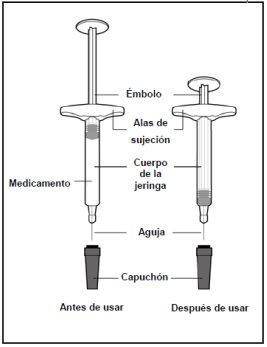
Figure A
- DO NOTremove the cap until you are ready to administer the injection. Once you remove the cap, DO NOTreplace it.
Preparation for injection
- Gather the injection supplies.
- Prepare a clean, flat surface such as a table or countertop in a well-lit area.
- Remove the syringe from the refrigerator and take it out of the box, holding it by the middle of the syringe body.
- Make sure you have the following supplies:
- Syringe
- Alcohol wipe
- Cotton ball or gauze *
- Adhesive bandage *
- Sharps disposal container *
*Items not included in the box.
- Inspect the syringe.
DO NOTuse the syringe if:
- It is cracked or damaged.
- The expiration date has passed.
- Inspect the medicine (see Figure B).
The liquid should be clear, colorless to pale brown. DO NOTuse the syringe if the liquid is cloudy or discolored, or if it contains particles. Note: You may see bubbles in the liquid. This is normal. |
Figure B |
- Wait 30 minutes.
- Let the syringe sit at room temperature for 30 minutes to allow it to reach room temperature naturally.
DO NOTheat the syringe using heat sources such as warm water or a microwave.
- Choose an injection site (see Figure C).
DO NOTadminister the injection in skin that is less than 5 cm from the navel, or that is sensitive, damaged, bruised, or scarred. Note: Rotate the injection site each time you administer an injection. Each new injection site should be at least 3 cm from the previous injection site. |
Figure C |
- Wash your hands.
- Wash your hands with soap and water, and dry them well.
- Clean the injection site.
- Clean the injection site with an alcohol wipe.
- Let the skin dry before administering the injection.
DO NOTblow or touch the injection site before administering the injection.
Administer the injection
- Remove the cap (see Figure D).
DO NOTtouch the needle. If you do, you may cause a needlestick injury. |
Figure D |
- Insert the syringe into the injection site (see Figure E).
|
Figure E |
- Administer the injection (see Figure F).
|
Figure F |
- Remove the needle from the injection site (see Figure G).
DO NOTrub the injection site. |
Figure G |
After the injection
- Dispose of the syringe (see Figure H).
DO NOTreplace the cap. Note: Keep the syringe and sharps disposal container out of the sight and reach of children. |
Figure H |
Read these instructions carefully before using the Remsima syringe. Consult your healthcare professional if you have questions about using the Remsima syringe.
Important information
- Use the syringe ONLY IFyour healthcare professional has trained you in the correct way to prepare and administer an injection.
- Ask your healthcare professional how often you will need to administer an injection.
- Rotate the injection site each time you administer an injection. Each new injection site should be at least 3 cm from the previous injection site.
- DO NOTuse the syringe if it has been dropped or if it is visibly damaged. A damaged syringe may not work properly.
- DO NOTreuse the syringe.
- DO NOTshake the syringe at any time.
About the Remsima syringe
Syringe parts (see Figure A):
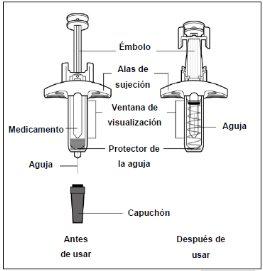
Figure A
- DO NOTremove the cap until you are ready to administer the injection. Once you remove the cap, DO NOTreplace it.
Preparation for injection
- Gather the injection supplies.
- Prepare a clean, flat surface such as a table or countertop in a well-lit area.
- Remove the syringe from the refrigerator and take it out of the box, holding it by the middle of the syringe body.
- Make sure you have the following supplies:
- Syringe
- Alcohol wipe
- Cotton ball or gauze *
- Adhesive bandage *
- Sharps disposal container *
*Items not included in the box.
- Inspect the syringe.
DO NOTuse the syringe if:
- It is cracked or damaged.
- The expiration date has passed.
- Inspect the medicine (see Figure B).
The liquid should be clear, colorless to pale brown. DO NOTuse the syringe if the liquid is cloudy or discolored, or if it contains particles. Note: You may see bubbles in the liquid. This is normal. |
Figure B |
- Wait 30 minutes.
- Let the syringe sit at room temperature for 30 minutes to allow it to reach room temperature naturally.
DO NOTheat the syringe using heat sources such as warm water or a microwave.
- Choose an injection site (see Figure C).
DO NOTadminister the injection in skin that is less than 5 cm from the navel, or that is sensitive, damaged, bruised, or scarred. Note: Rotate the injection site each time you administer an injection. Each new injection site should be at least 3 cm from the previous injection site. |
Figure C |
- Wash your hands.
- Wash your hands with soap and water, and dry them well.
- Clean the injection site.
- Clean the injection site with an alcohol wipe.
- Let the skin dry before administering the injection.
DO NOTblow or touch the injection site before administering the injection.
Administer the injection
- Remove the cap (see Figure D).
DO NOTtouch the needle. If you do, you may cause a needlestick injury. |
Figure D |
- Insert the syringe into the injection site (see Figure E)
|
|
Figure E |
- Administer the injection (see Figure F).
|
Figure F |
- Remove the syringe from the injection site (see Figure G).
Do notrub the injection site. |
Figure G |
After the injection
- Discard the syringe (see Figure H).
Do notrecap the syringe. Note: Keep the syringe and the sharp object disposal container out of sight and reach of children. |
Figure H |
- Country of registration
- Active substance
- Prescription requiredYes
- Manufacturer
- This information is for reference only and does not constitute medical advice. Always consult a licensed doctor before taking any medication. Oladoctor is not responsible for medical decisions based on this content.
- Alternatives to REMSIMA 120 mg SOLUTION FOR INJECTION IN PRE-FILLED SYRINGEDosage form: INJECTABLE PERFUSION, 100 mgActive substance: infliximabManufacturer: Samsung Bioepis Nl B.V.Prescription requiredDosage form: INJECTABLE PERFUSION, 100 mgActive substance: infliximabManufacturer: Pfizer Europe Ma EeigPrescription requiredDosage form: INJECTABLE PERFUSION, UnknownActive substance: infliximabManufacturer: Janssen Biologics B.V.Prescription required
Alternatives to REMSIMA 120 mg SOLUTION FOR INJECTION IN PRE-FILLED SYRINGE in other countries
The best alternatives with the same active ingredient and therapeutic effect.
Alternative to REMSIMA 120 mg SOLUTION FOR INJECTION IN PRE-FILLED SYRINGE in Ucrania
Online doctors for REMSIMA 120 mg SOLUTION FOR INJECTION IN PRE-FILLED SYRINGE
Discuss dosage, side effects, interactions, contraindications, and prescription renewal for REMSIMA 120 mg SOLUTION FOR INJECTION IN PRE-FILLED SYRINGE – subject to medical assessment and local rules.



